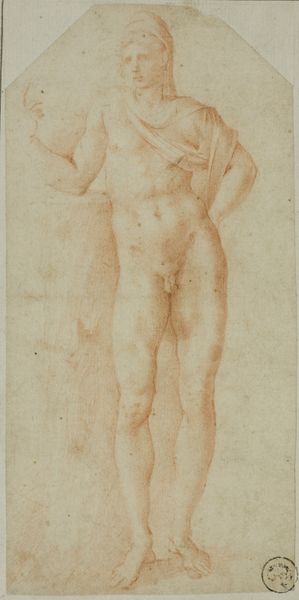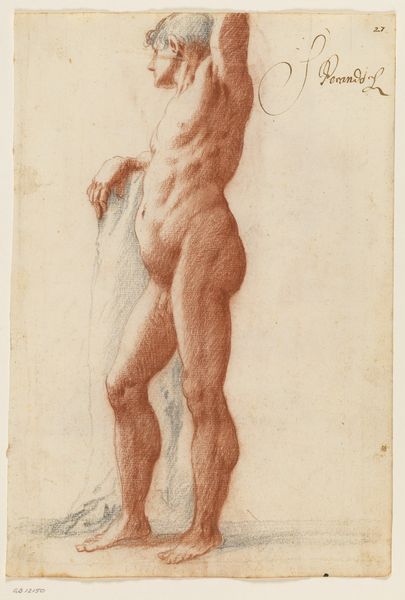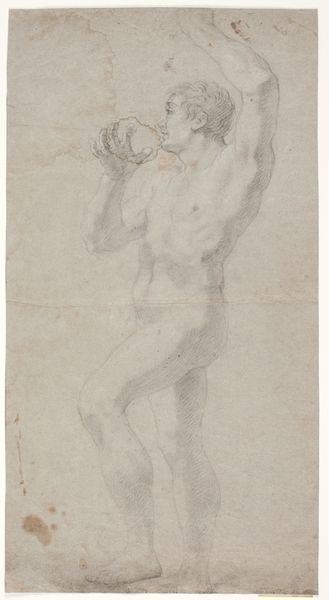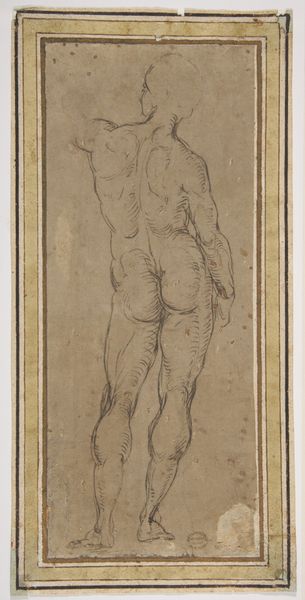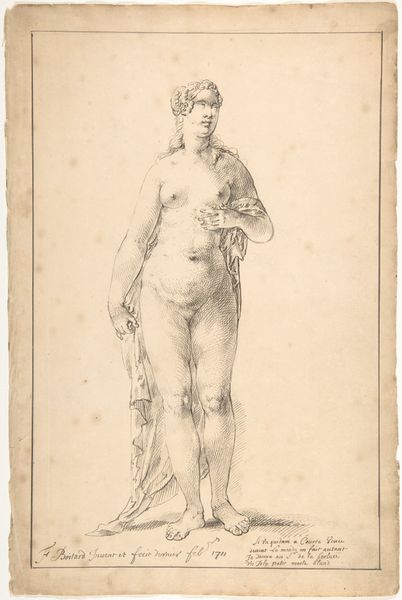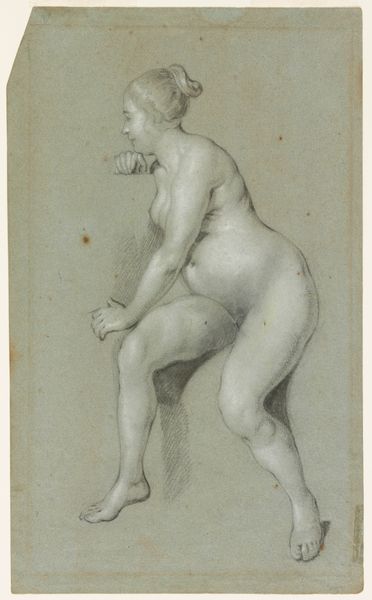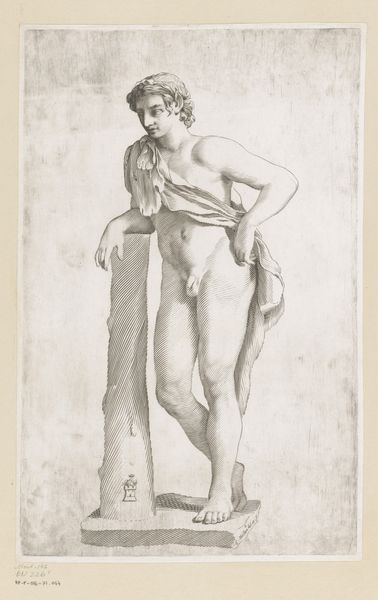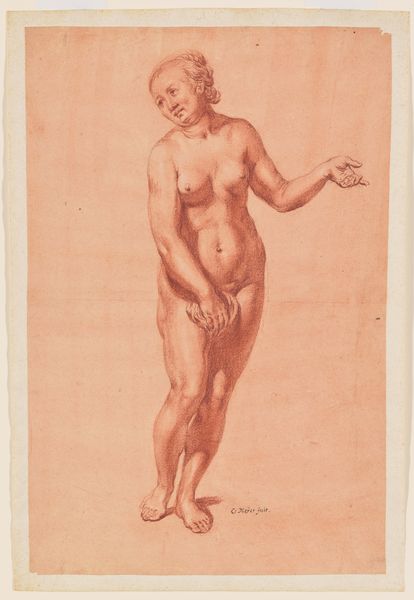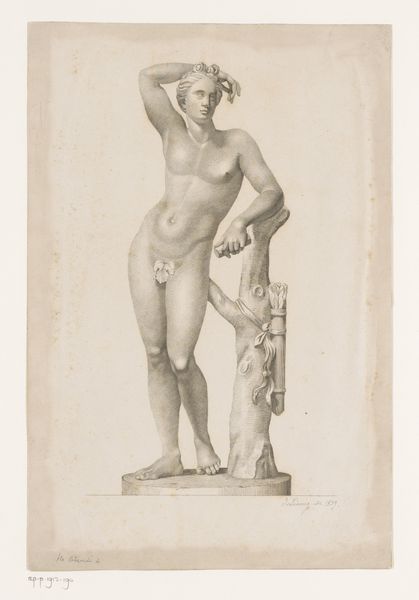
drawing, pencil
#
drawing
#
pencil sketch
#
figuration
#
pencil
#
academic-art
#
realism
Dimensions: height 535 mm, width 346 mm
Copyright: Rijks Museum: Open Domain
Curator: Before us, we have a drawing from sometime between 1809 and 1869 by Alexander Cranendoncq, residing here at the Rijksmuseum. It’s titled, “Studie naar beeld van staande man met kind.” Crafted with pencil, this sketch embodies elements of both realism and academic art traditions. Editor: The overall mood is quite pensive. There is something unfinished, uncertain. It has this muted, warm, reddish-brown monochrome that brings about a certain… sadness almost, with the rawness of a fleeting observation caught with pencil on paper. Curator: Indeed. The artist is clearly interested in capturing the human form with a dedication to accurate representation. Note the detail in the man's musculature and the textures achieved through hatching and subtle gradations of tone, particularly around the figure. This technique really allows a careful reading of the subject’s anatomical structure. Editor: The subject turning his back on us...it pulls you right in, doesn’t it? We are behind him, observing...he holds the child protectively, his body almost forming a shelter from a perceived, perhaps unknown, storm. You have the impression he is standing next to some rugged stone pillar, textured by some strange patina. It definitely anchors him visually and symbolically. Curator: Absolutely. One could argue that this pillar creates a visual tension, dividing the composition but also integrating seamlessly into it as a form of dramatic irony. Consider that Cranendoncq perhaps aimed for something far beyond simple anatomical accuracy here, embedding psychological dimensions within the careful interplay of light and shadow, of presence and absence. Editor: So much communicated, almost effortlessly, with what looks like limited, perhaps hurried strokes. The tenderness in the curve of his neck as he shields the child contrasts with his solid, rather heroic, build. What you say about presence and absence strikes home...as the man hides, and we look, we imagine...we fill in the missing narrative. Curator: I would certainly agree. The incomplete, suggestive character lends itself perfectly to semiotic interpretation and further considerations concerning our relationship with observation, visibility and what it is to document humanity at this historic junction. Editor: It really speaks to the core of humanity. Powerful stuff from a seemingly simple sketch.
Comments
No comments
Be the first to comment and join the conversation on the ultimate creative platform.
